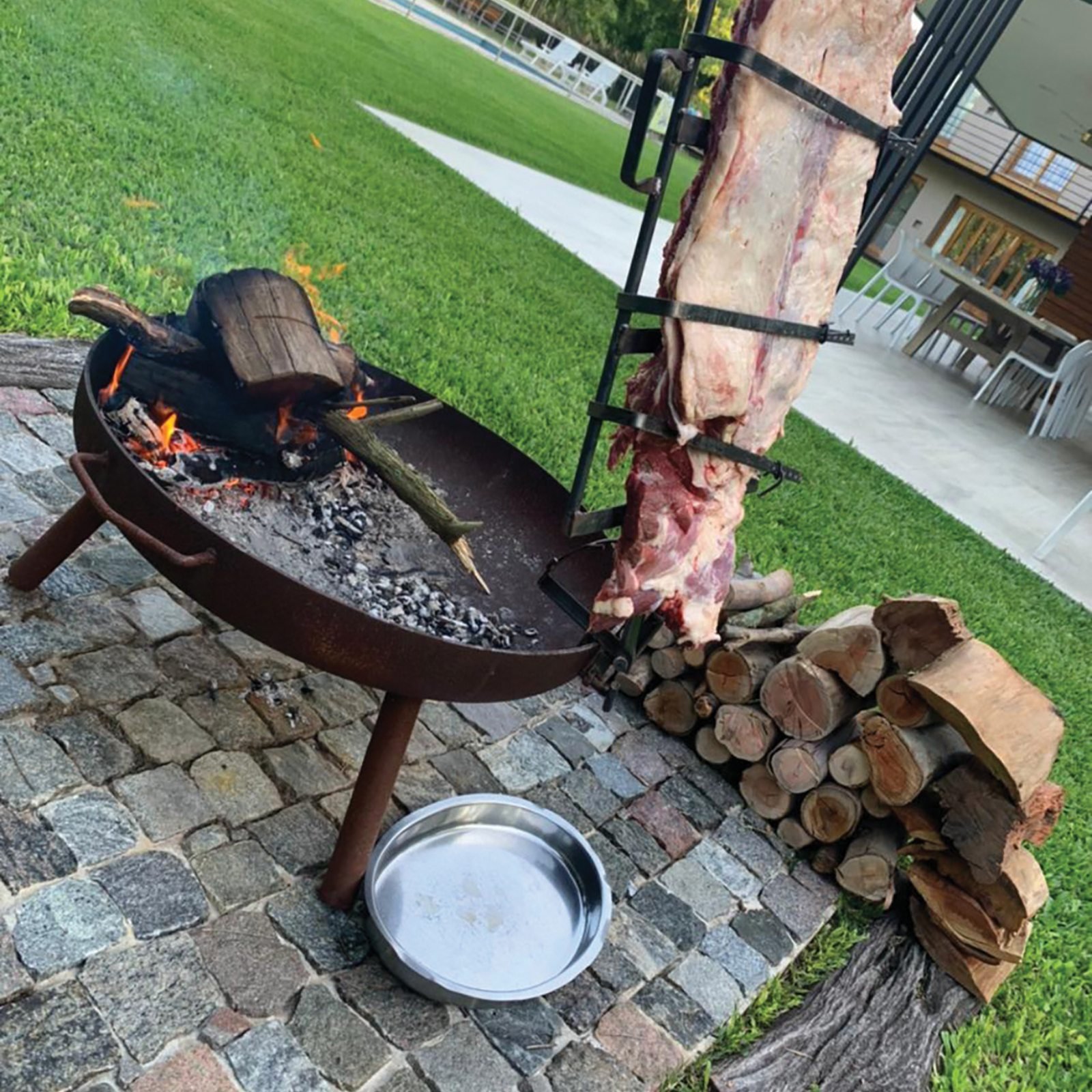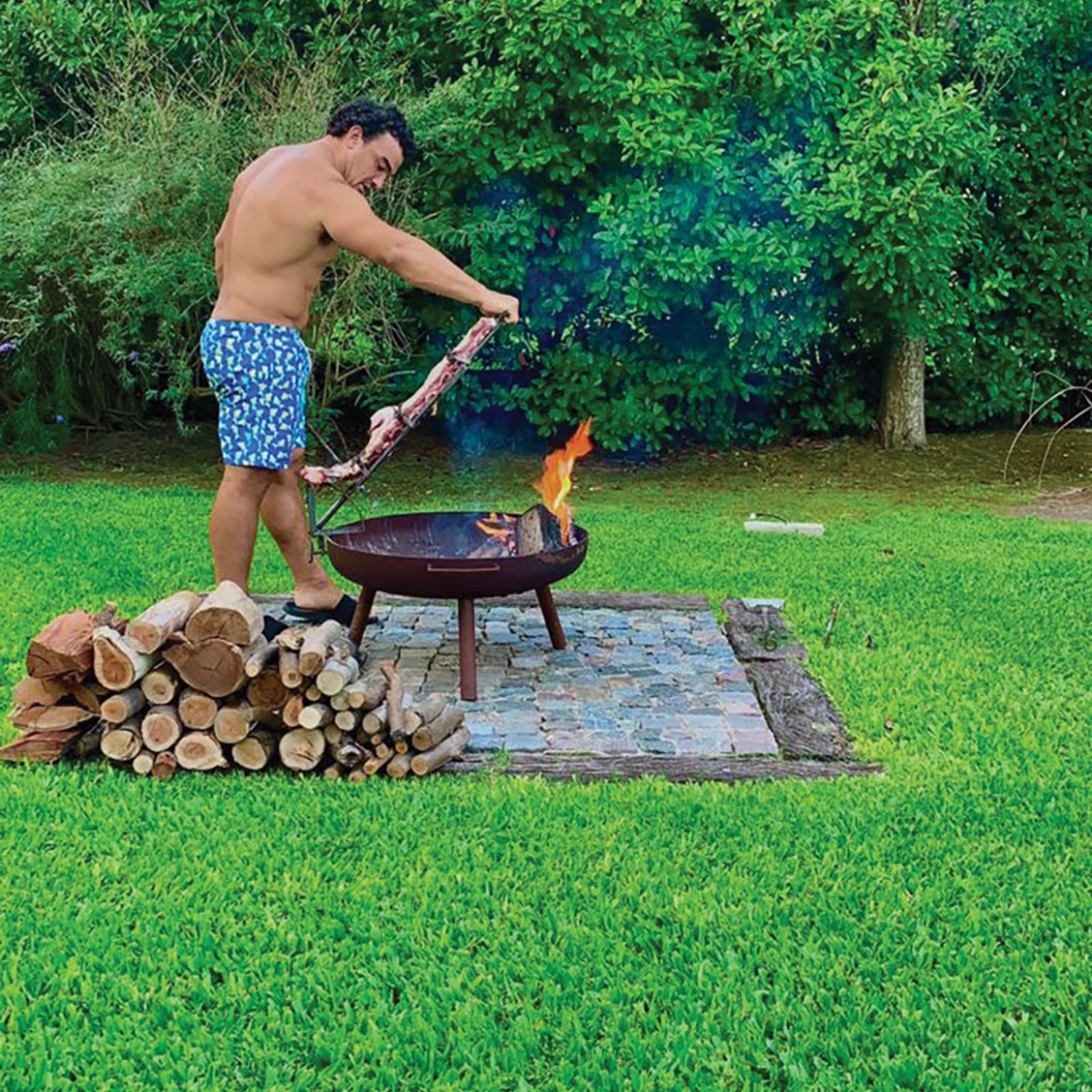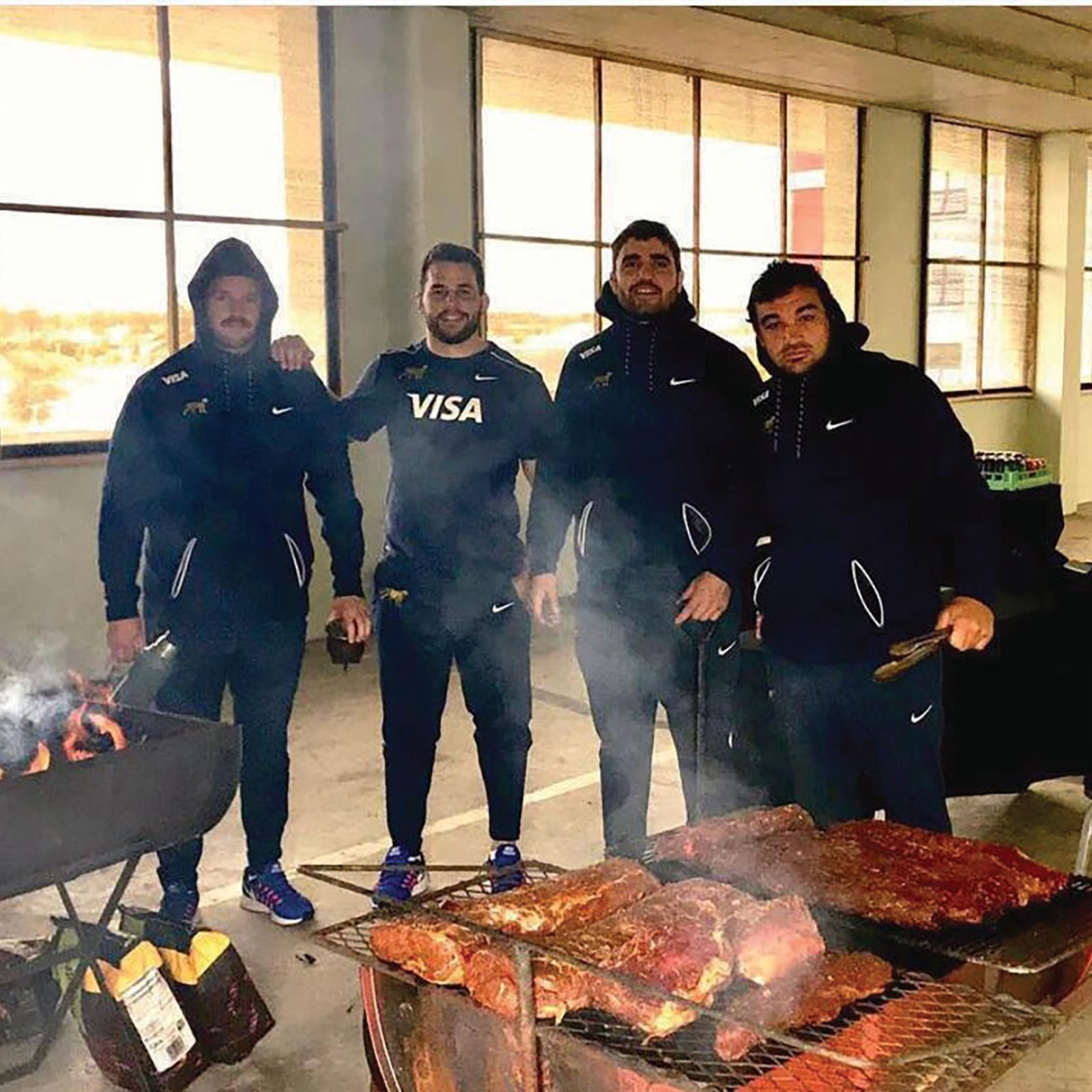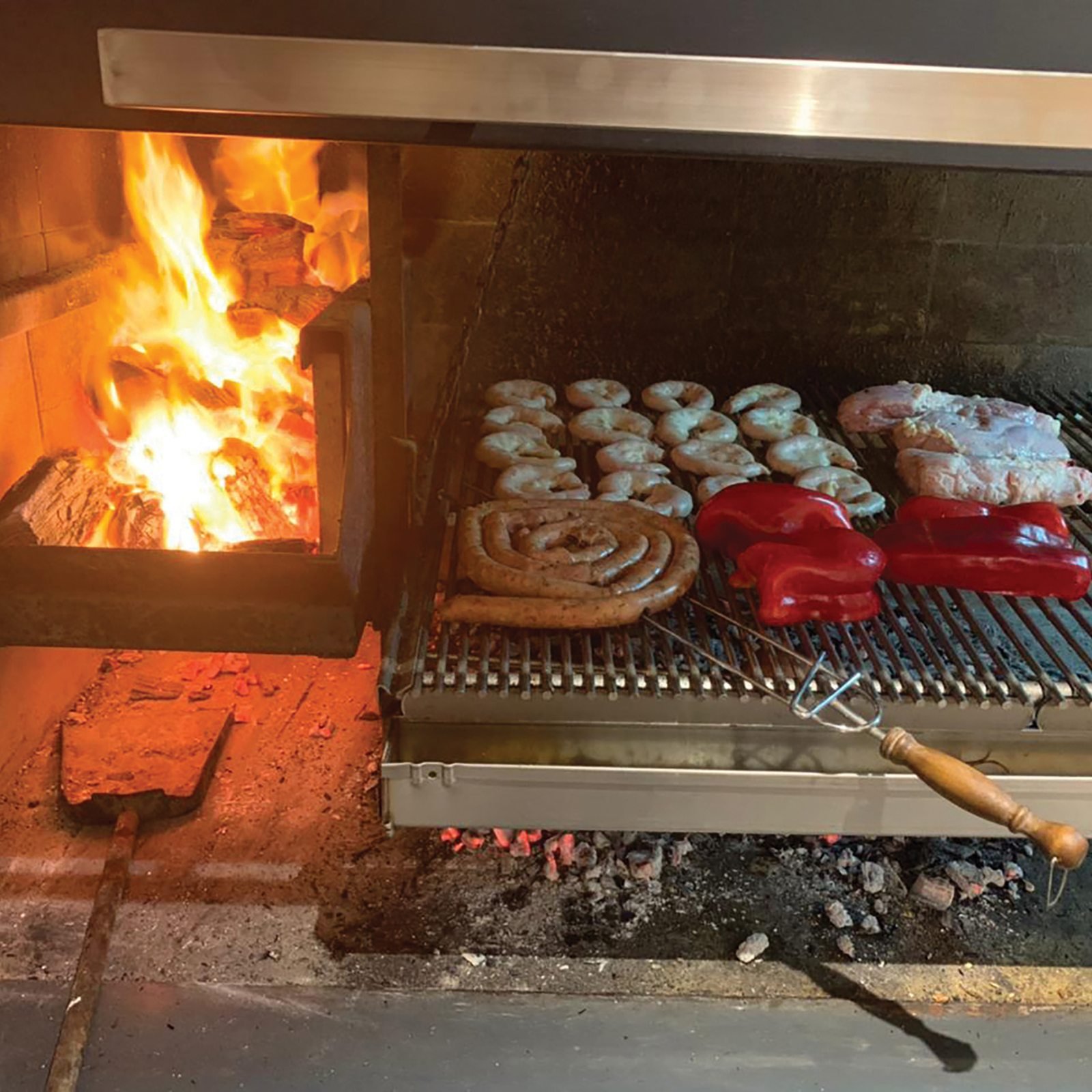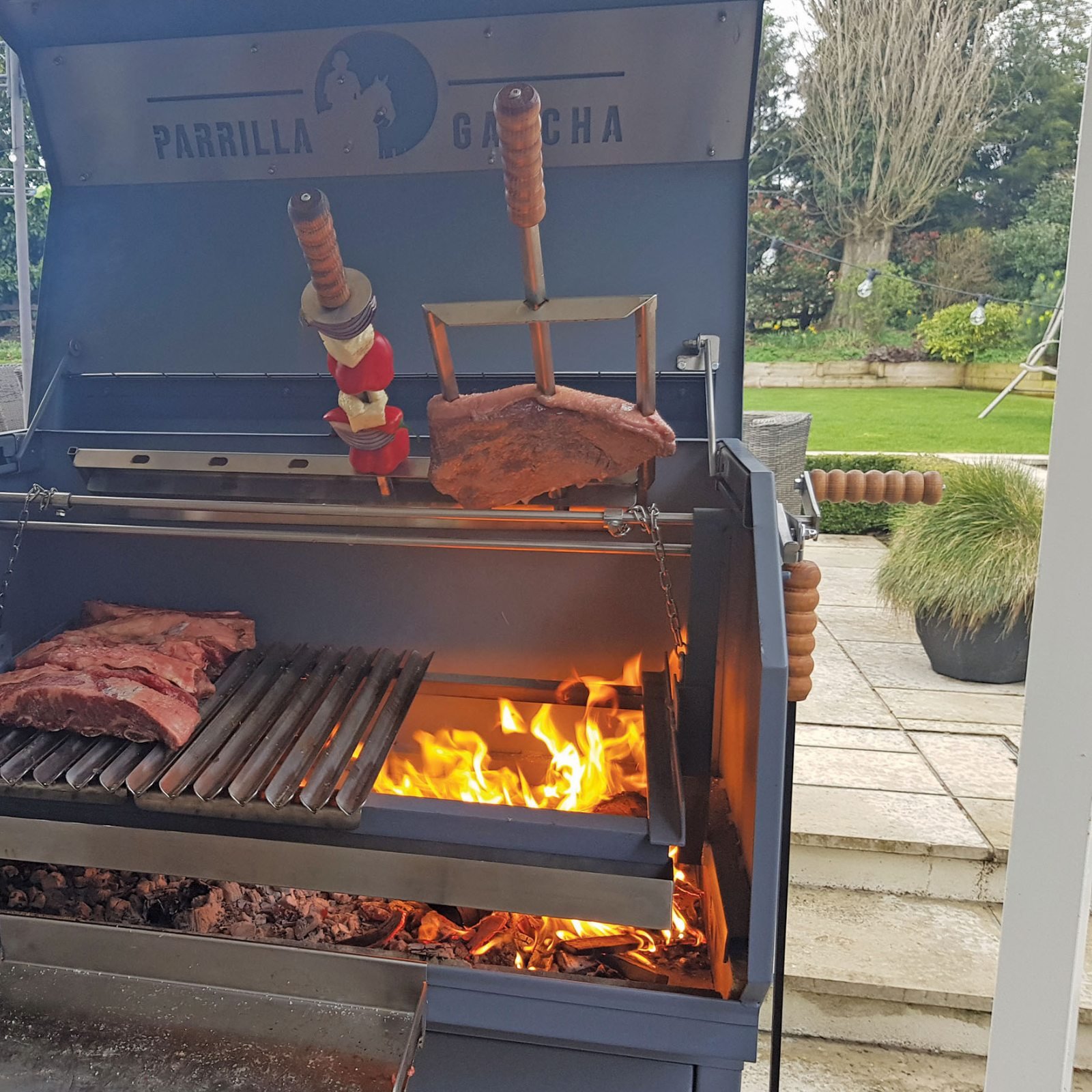Do grill for me Argentina
Issue 3 | Spring 2021
When it comes to their heroes, sportsmen take up most of the top table, but asadors – grill masters - are almost equally revered. RUPERT BATES gets close to the fire that fuels Argentina’s passion for barbecue
When we dream of Argentina we think of football; a country where Maradona – El Diego – rose from barrio boy to sainthood, while Lionel Messi remains merely a living god.
But Argentina would fancy its chances in a World Cup of barbecue too. No hand of god here, more hand of asador – the high priest of the feast – pulling the finest beef from the fire.
“A long, slow Sunday lunch outdoors with the meat on a cross – an asado with family and friends is what we all do in Argentina. It is always wood we cook with, on an open fire. When the meal is served the whole table will clap the asador – the head chef – assuming the meat is good... and in our country the meat is always good,” says Agustin Creevy, the former Argentina rugby captain, currently playing in the English Premiership for London Irish.
Brentford in west London is a long way from Creevy’s birthplace in La Plata, Argentina, and talk of gathering round the parrilla (grill) prompts a wistful look homewards from one of the finest forwards to play the game and his country’s most capped player. But Gus, the veteran of three World Cups and 89 caps, is soon back in England sharing phone pictures as the asador, in charge of cooking huge slabs of meat, chopping the wood, tending the flames, adjusting the grill height for temperature control.
“The very nature of asado cooking lends itself to a social environment. Cooking around a fire for hours on end, tending the fire, cooking larger chunks of meat to feed your family and friends ”
Creevy, like many South Americans, is a disciple of his remarkable countryman Francis Mallmann, a poet as much as a chef and his episode of the Netflix series Chef’s Table is as elemental as it gets. “Grilling in Argentina isn’t just about the food; it is a ritual and ceremony,” muses Mallmann.
Creevy says the tradition of lighting the fire and cooking outdoors is passed down the generations in Argentina.
“My father taught me and I was always asking questions, eager to learn. But everyone develops their own techniques.” says Creevy.
Don’t talk to him about rubs, marinades and sauces. Simply salt to season the meat; perhaps some chimichurri – that blend of parsley, oregano, onion, garlic, chilli flakes, olive oil and lemon juice – for the table, a bottle of wine or some beers to wash it down and the Puma is as content as a cow grazing on the Pampas.
“The flavour is in our beef; the way our grass-fed cattle are reared and fed.”
We are talking in the latest lockdown but Creevy urges me to head to Camden in London when life reopens and La Patagonia restaurant. “That is where you’ll find the most authentic Argentine food over here.”
The restaurant is run by chef Adrian Cocco from Cordoba and his Buenos Aires wife, Lili, grilling on a parrilla – over wood and charcoal naturally – with premium Argentine cuts of sirloin, rib eye and lomo. The asado de tira, a short rib, comes highly recommended, as do the achuras starters. And yes they love their football, so much so that the outside of the restaurant is painted in the blue and white national colours and the No 10 – the shirt number of Maradona and Messi.
Don’t forget the rugby too and you’re a happy butcher if you get to supply a pack of hungry forwards. “The front-row players are the best asadors on the team. Actually, it is probably the props over the grill, with me the hooker as manager, in charge of logistics, buying the meat and taking the credit!” says Creevy, who met Maradona during the 2015 Rugby World Cup in England after Argentina’s game against Tonga. “That was a wonderful moment.”
You don’t have to be Argentine to appreciate the visceral nature of their cooking and that gaucho culture of fire and freedom, although in the case of Tom Bray of Country Fire Kitchen, his Ecuadorian wife, Ana, ensures the culinary journey and inspiration stretches across South America.
Bray, based in Somerset, England, made his first asado cross four years ago. Back then it was a hobby, but grills, planchas, chapas and fire pits have followed, together with a laddered hanging frame as a signature piece and a thriving international business created.
Bray, when restrictions allow, runs asado master classes as well as event catering.
“The UK food scene is like a sponge for food cultures around the world. The very nature of asado cooking lends itself to a social environment. Cooking around a fire for hours on end, tending the fire, cooking large chunks of meat to feed your family and friends,” says Bray.
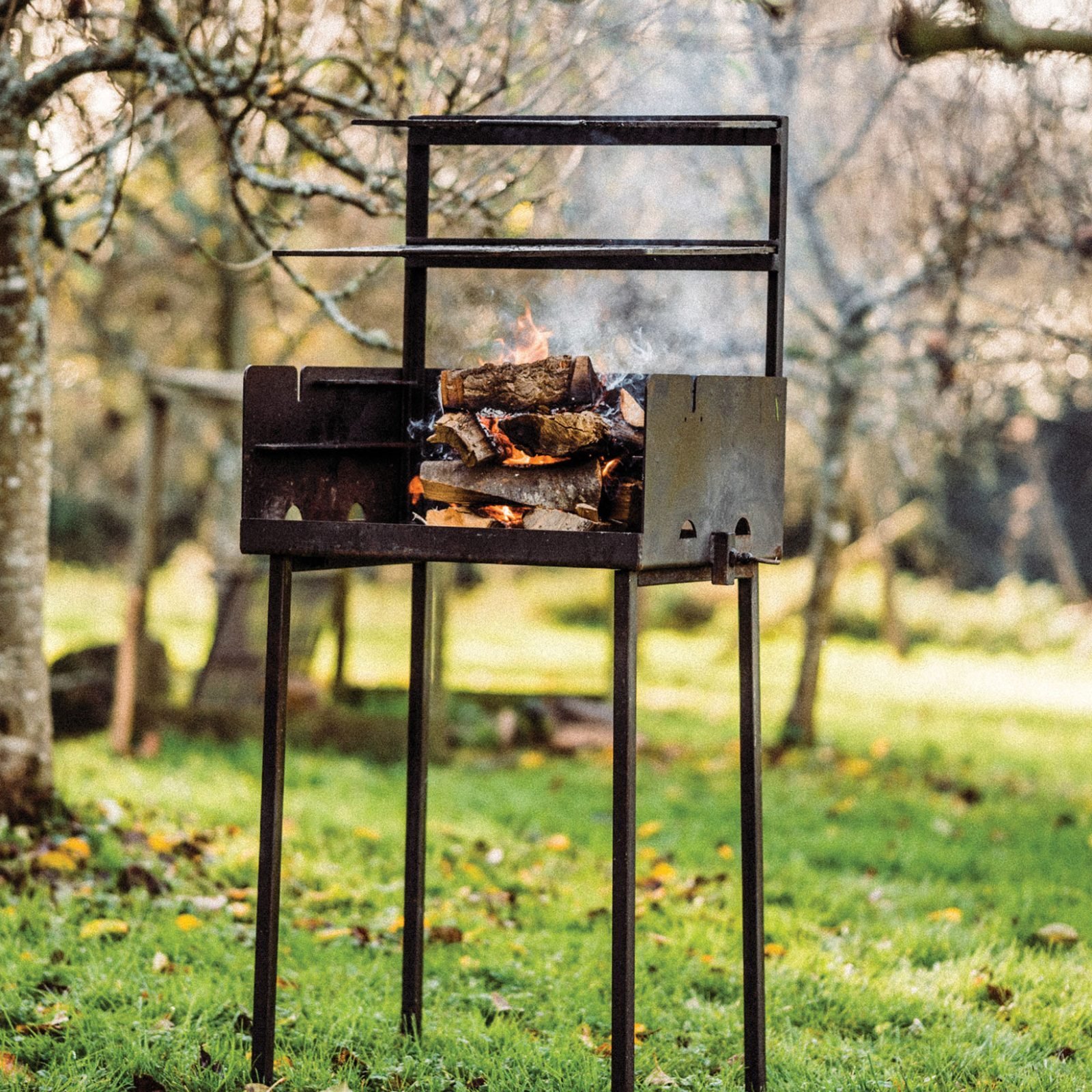
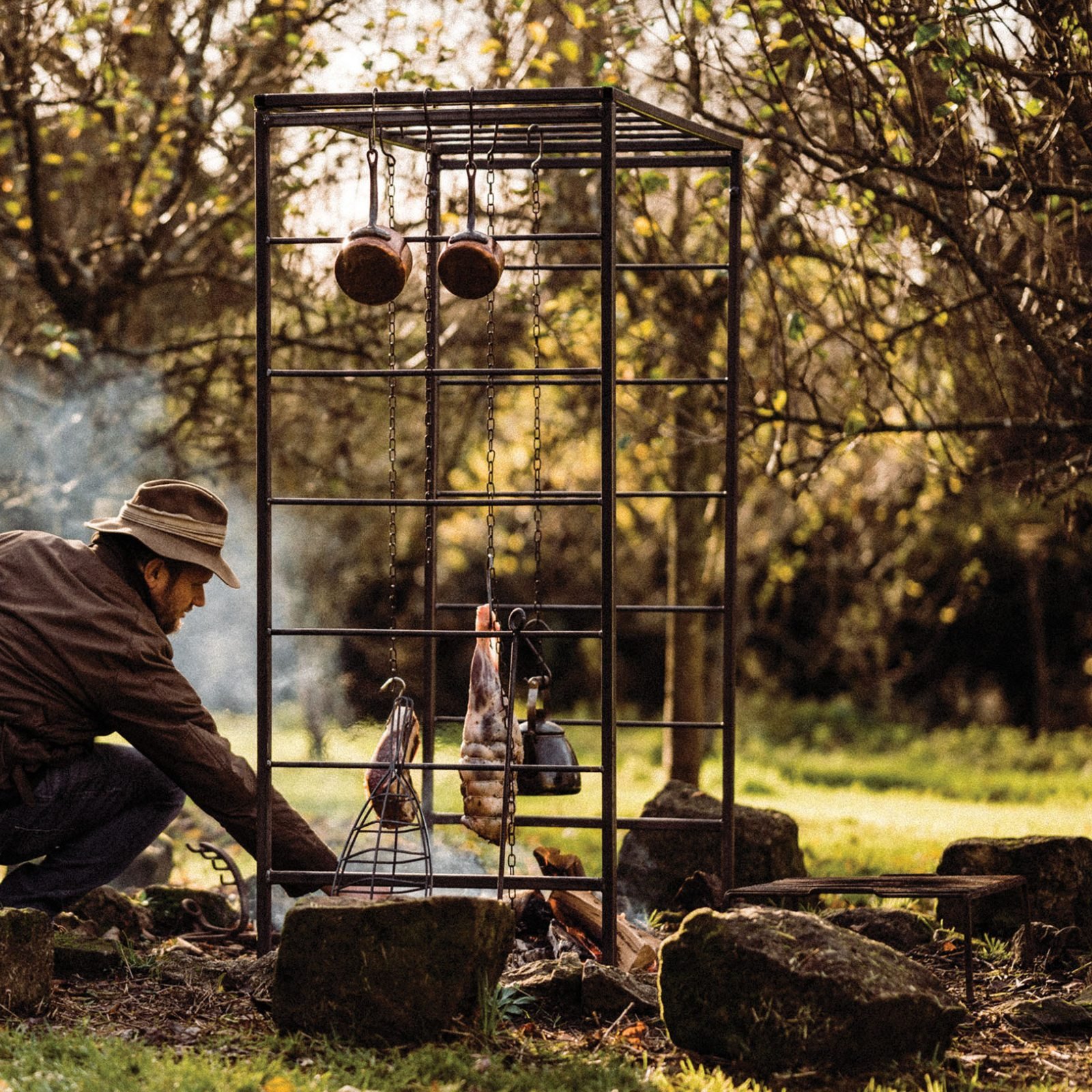
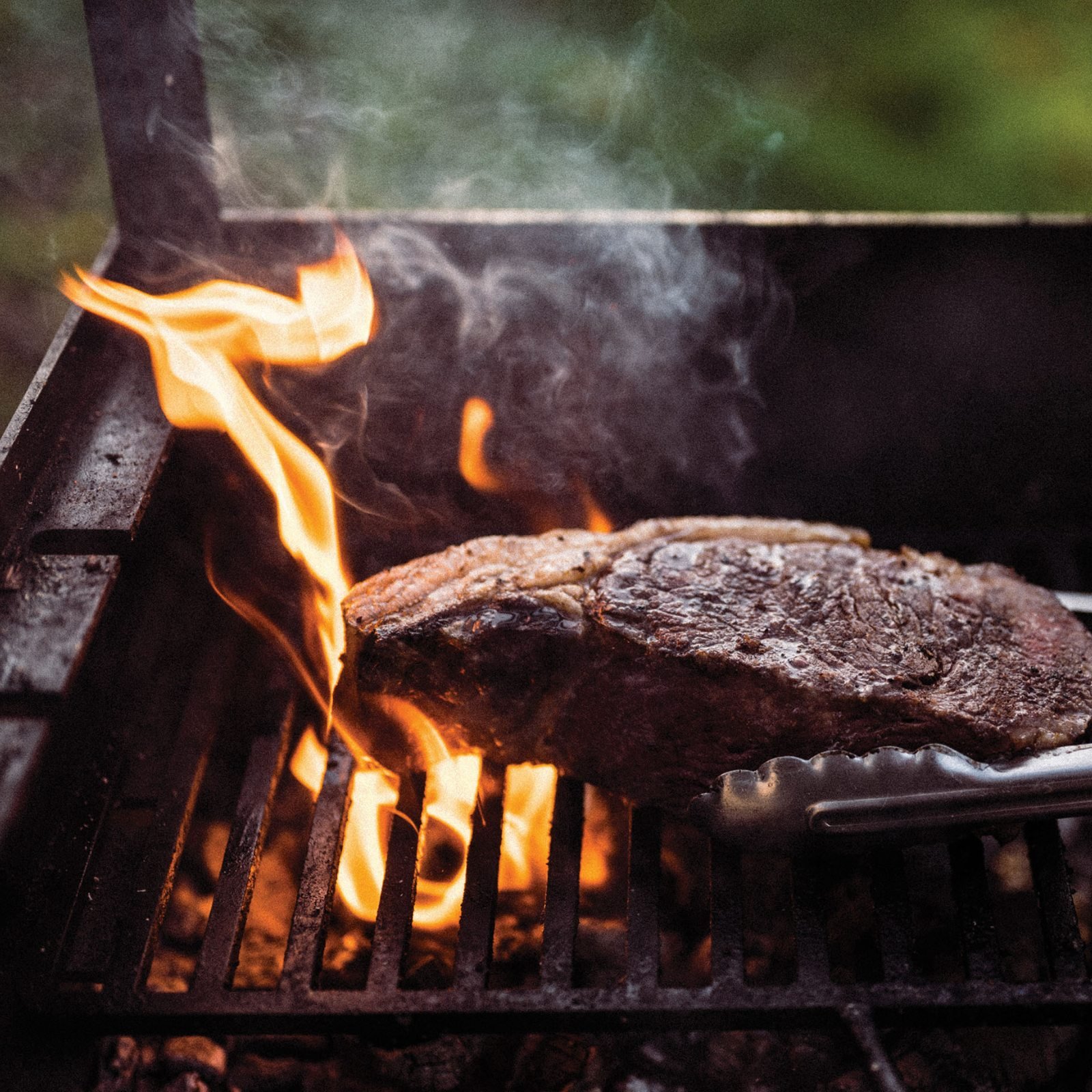
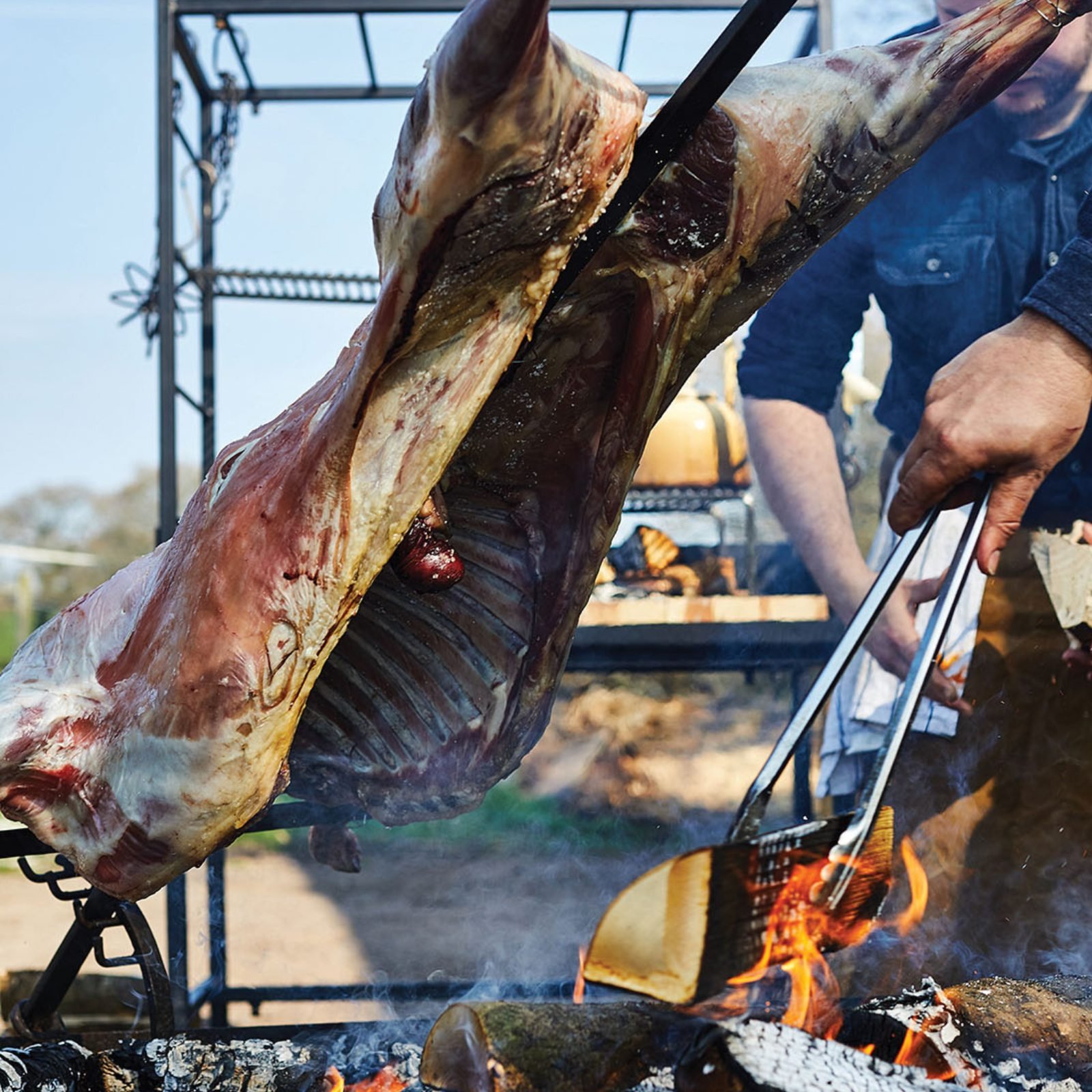
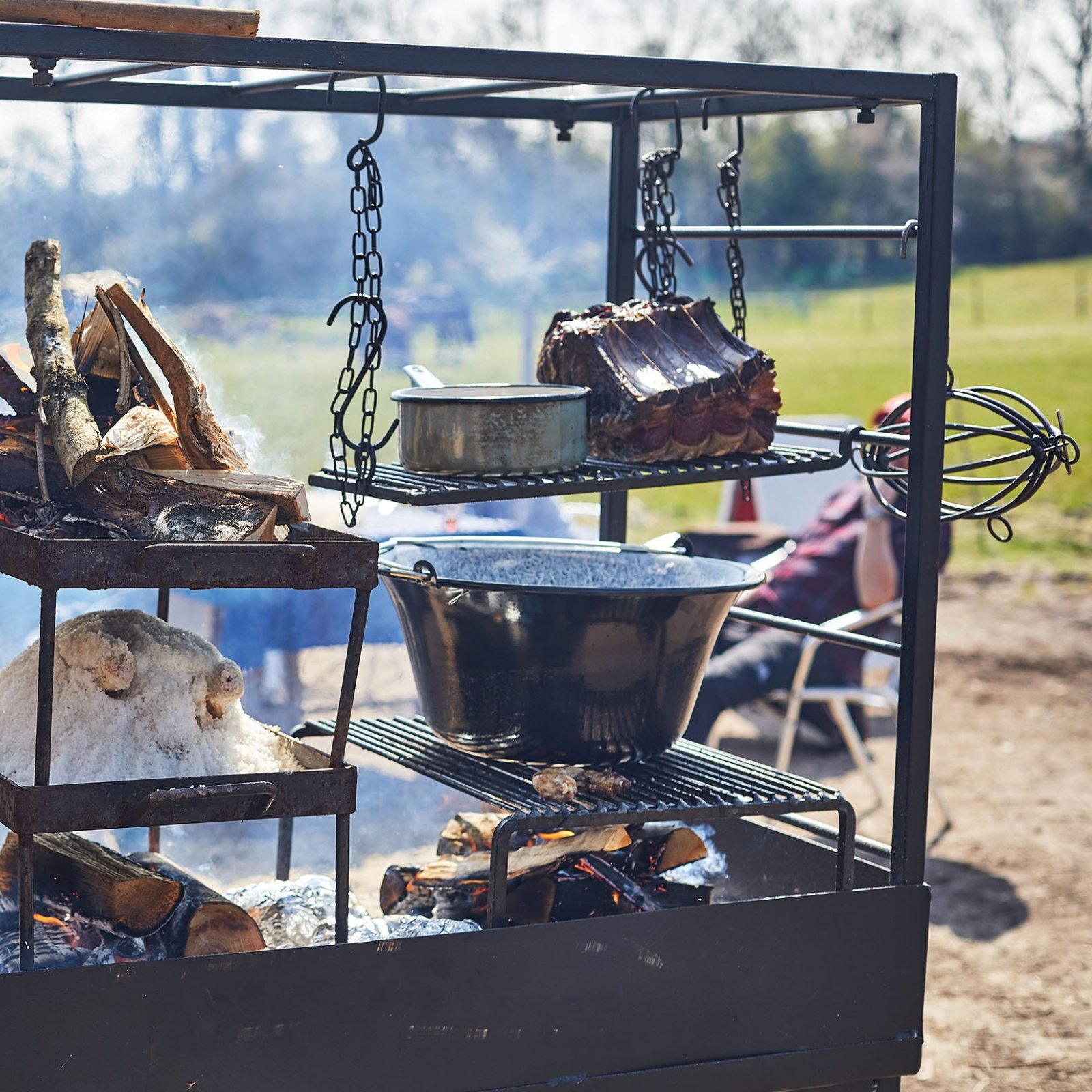
Fully immersed in the Argentine style, his dream barbecue would be simply beef and salt – sirloin on the bone from Ollie Woolnough of Meat Matters, grilled over embers and served with chimichurri.
“Food cooked over fire does not need to be complicated. Metal, meat and fire, there is nothing else like it,” says Bray, who also supplies equipment to commercial kitchens.
Despite the draw of the smoke, you are soon lured back to football and there are few Argentine stars in England who Nico Frangione of Parrilla Gaucha UK has not built a signature grill for.
Frangione has his Argentine wife, Lorena, to thank as the catalyst for his Hertfordshire business. She missed her asado from home, so he imported one in 2007 and the rest is parrilla history, with the likes of Messi, Sergio Agüero, Mauricio Pochettino and Osvaldo Ardiles among his football royalty clients.
“I became captivated with gaucho history and culture and convinced that the parrilla wood-fired style of cooking could be appreciated by BBQ lovers everywhere,” says Nico Frangione, Italian of heritage, but smitten by Argentina.
Traditional masonry asado parrillas are imported direct from Argentina, as well as manufacturing premium grade stainless steel parrillas in the UK for both domestic and commercial markets. Frangione can also build and design a bespoke quincho – an outdoor BBQ dining and entertainment space. In 2019 he launched the Asador Home Pro. Think gaucho campfire setting.
“You need the right equipment, but the essence of asado is friendship and hospitality, coming together round the warmth of a fire and the drifting smell of cooking meat,” says Frangione.
He is warming to his theme. He suggests vacio (beef flank) for the main course – a slab of marbled beef “that sizzles and explodes with flavour”. Matambre, meaning ‘to kill hunger’, is next – a thin cut of beef often used to wrap vegetables, eggs and herbs.
“An authentic parrilla is one that has large grills with something to catch the grease from the meat and a lever to adjust the height. With a separate space to make a fire then you are ready to start.”
Like Creevy, Frangione stresses seasoning is “by salt alone” with the cuts not marinated, cooking them slowly at an even temperature. Vacio is his favourite cut, after a starter of empanadas and his drink of choice a Malbec.
That staple wine of Argentina remains a huge favourite and, as we have a lot of food to consume and stars of football and rugby to entertain, let us dig a little deeper through the terroir. Try the Cabernet and Malbec blends and head for the Mendoza bodega of Catena Zapata; sup from the Viña Cobos vineyard, or sample the rock star winemaker that is Matias Riccitelli.
Back to the food and the Camden High Street menu of La Patagonia. I am thinking morcilla (black pudding), followed by cordero patagónico (lamb loin with chimichurri sauce).
Guests on my table for four? Messi, Ardiles and Creevy with Maradona looking down on us, still the soul of the party. Nothing to do with their sporting legends; I just need them to tell me what exactly is on a tablita de achuras.


